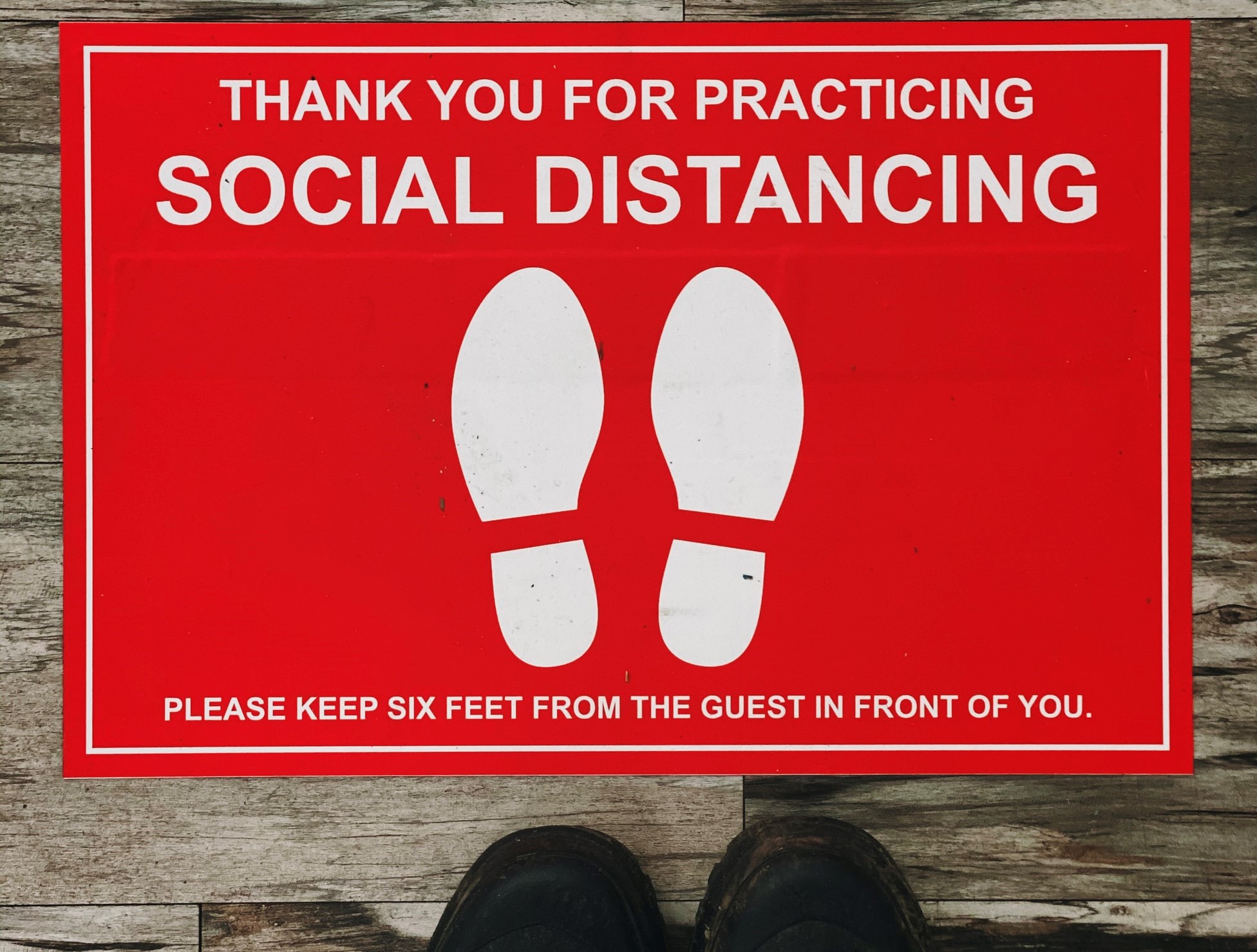BLOG
Violence against retail staff | Employers’ duties during COVID-19
Written on 2 June 2021

All businesses have been impacted by COVID-19 in some way or another. However, for retailers, COVID-19 has presented another hazard: an increased risk of workplace violence. With shop workers on the front line of conveying in-store COVID-19 health and safety messages to customers, and restrictions such as mask-wearing and social distancing still in effect, staff continue to experience verbal abuse and threats of violence from customers on a daily basis.
Worrying statistics
According to the British Retail Consortium, some 400 shop workers are physically attacked every day. While violence against retail workers has long been an issue, the coronavirus pandemic has certainly accelerated the problem.
In fact, Co-op stores reported a 36% rise in violence towards shop workers between March 2020 and October 2020, and a recent survey by the retail workers union Usdaw found staff enforcement of coronavirus restrictions and policies – such as mandatory mask wearing, queuing, one-way systems and limits on store numbers – to be a leading cause of violent incidents.
Similarly, the latest crime survey by the Association of Convenience Stores reports that 89% of those working in local shops experience some kind of abuse. The survey estimates that 40,000 incidents of violence occurred in the sector last year, with 65% of respondents having witnessed COVID-related threats to staff.
These shocking reports have promoted 65 leading retailers and industry bodies to write to the Prime Minister, urging the government to “treat the issue with the seriousness it deserves and improve protection for our employees by creating a new statutory offence of assaulting, threatening or abusing a retail worker.”
Related Content
Do you need support?
Speak to us for an honest, no obligation chat on:
0345 226 8393 Lines are open 9am – 5pm
Retailers' duties
Under the Health and Safety at Work etc Act 1974, employers have a legal duty to protect the health, safety and welfare of staff. This duty includes taking all reasonably practicable measures to prevent all forms of work-related violence, which the Health and Safety Executive defines as “any incident in which a person is abused, threatened or assaulted in circumstances relating to their work”. This includes:
- Physical violence – kicking, spitting, hitting or pushing, as well as more extreme violence with weapons.
- Verbal abuse – shouting, swearing or insults, racial or sexual abuse, threats and intimidation.
Victims suffer not only physical injury but also psychological effects, such as anxiety and stress. A 2019 report by City, University of London, said rising violent retail crime was causing “long-lasting anxiety and post-traumatic stress disorder”.
The risk of violence must be eliminated or reduced in the same way as any other possible cause of harm in the workplace, such as lifting heavy loads. Key to doing this is carrying out a risk assessment, as this will help to determine whether violence or aggression is a problem for your staff and business, and how matters can be improved. The assessment will also enable you to produce a policy and procedure for dealing with such matters and should form part of your wider health and safety policy.
Having considered and assessed the risk of in-store violence and aggression, you should have policies, measures and training in place that aim to minimise that risk to as low a level as is reasonably practicable. This means balancing the time, cost and effort involved in implementing a safety measure against the level of risk posed. Only if the former grossly outweighs the latter would you be justified in not taking that step (and even then, you would be expected to reduce risk using other, more proportionate controls).
Your risk assessment should of course have been updated following the government’s COVID-19 secure requirements, taking into account the increased risk of violence and aggression to staff.

Preventative measures
Acting to prevent incidents of violence not only protects your employees but also reduces the risk of claims being made against you by injured employees. To help protect shopworkers and increase your claims defensibility, follow these five tips:
Act before violence occurs. Carry out individual store risk assessments as they take into account factors specific to particular stores, such as an area’s crime rating and number of prior violent incidents. Be sure to consult staff as they often have better insight into potential problems and may even have ideas about solving them.
Install physical controls. This includes deterrents such as CCTV in high-risk areas or screening by sales points. Remember, while barriers protect staff from coronavirus, they may create additional hazards if workers aren’t able to easily remove themselves from an area when there’s a threat. Also consider panic buttons and security communication systems.
Post warning signs. Remind customers about your mask-wearing policy and social distancing measures and reiterate that violence won’t be tolerated. You can also do this on your website.
Provide training. Training in dealing with difficult and challenging behaviour is a must. It should include threat recognition, conflict resolution, non-violent response and instruction on escalation processes. Identify a safe area for employees to go to if they feel they are in danger, such as a room that locks from the inside and has a second exit route, phone or silent alarm.
Revisit training regularly. Annual refreshers are normally appropriate. However, with staff typically having to enforce wearing of face coverings, consider more frequent reminders such as during weekly store briefings or team meetings.
Get support with your safety responsibilities
Retailers are responsible for taking all practicable precautions against “
To find out how our fixed-fee Health & Safety service can help you to operate compliantly during coronavirus and beyond, call 0345 226 8393 or request your free consultation using the button below.
Sign up for the latest news & insights
Resources
Latest News & Insights

5 times schools were prosecuted for health and safety failings in 2023/24
BLOG Written on 22 July 2024 In recent years, the importance of stringent health and safety measures in educational institutions has become increasingly apparent. Over

King’s Speech 2024 | 2 new employment Bills announced
BLOG Written on 18 July 2024 The 2024 general election saw the Labour Party return to UK Government for the first time in 14 years.

Managing misconduct | When is it safe to suspend?
BLOG Written by Angela Carter on 12 July 2024 When dealing with employee misconduct, it is sometimes appropriate to suspend an employee with full pay

Workplace fatalities | 6 key takeaways from the HSE’s 2023/24 statistics
BLOG Written on 5 July 2024 New statistics from the Health and Safety Executive (HSE) show that workplaces in Great Britain are no safer than

How a Labour government could impact probationary periods
BLOG Labour has pledged to expand the basic rights that are available to all workers from day one. This includes the right to parental leave, sick

TUPE 2024 | Simplified consultation rules for small businesses
BLOG Written by Susie Lockheart on 1 July 2024 The Employment Rights (Amendment, Revocation and Transitional Provisions) Regulations, which took effect on 1 January 2024,

Celebrating Pride Month | Creating inclusive recruitment processes
BLOG Written by Danielle Fargnoli on 26 June 2024 June is Pride Month, a time to celebrate the LGBTQ+ community and recognise the ongoing challenges

Collective redundancies | How the concept of “establishment” could change under a Labour government
BLOG Written by Lesley Rennie on 10 June 2024 Given the UK’s challenging economic climate, many organisations are seeking ways to reduce costs. This often

Social media in the workplace | Navigating the legal landscape
BLOG Written on 5 June 2024 Social media has transformed the way we communicate, allowing individuals to share their thoughts and opinions with a vast









